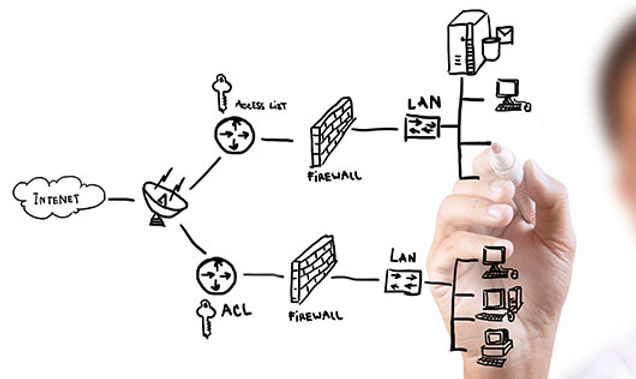How Construction and Remodeling Contractors Can Save Time and Money Using Single Source Technology Integrators

To fill this need, general contractors, along with architects and designers, now seek out firms with wide technology expertise that are also well-versed in working with medium-to-large commercial building construction – which might have a variety of needs. These could include installing networking nodes and stations, hardware and software for electronic records, and security systems that could vary from simple access to ensuring patient and staff privacy at medical facilities. All must be coordinated with construction schedules and the particular and unique requirements of each building.
The leading answer for many is the single-source technology expert, who has extensive knowledge of the construction process and of cutting-edge technology. That would include sourcing the available parts, and components of any technology system as well as having the skills to weave them together for the most effective system.
This process can span many traditional and developing technologies. Some examples would be network IT, Wi-Fi access points, security cameras, alarms, phone systems, including VoIP options, and heating and cooling technologies.
Coordination is the key. In many instances, technology integration is not completely covered under the purview of the general contractor. The single-source technology integrator is able to work side-by-side in harmony with the general contractor, as well as with other technical professionals, such as plumbers, electricians, installers, painters and other tradespeople.
The technology integrator reaches out as well to IT staff, security experts, building managers, and others who know the individual needs of each building.
In today’s complex construction, timing, execution, and coordinating the installation of all components can be the difference between a smooth process or problems that might result in expensive last-minute changes, or even having to remove and replace some elements.
To avoid this, organizations are turning to single-source companies that handle the full array of technologies, which might include the installation of low voltage wiring, cabling, conduit trays, wireless antennas, hubs, and electronic equipment racks, and even the locks on the exit doors.
“By working with a single-source technology provider that offers a menu of technology offerings, there is an advantage of having a single point of contact for overall system design, installation, management, and support,” says Eric Brackett, President of BTI Communications Group, a technology convergence provider that services clients nationwide.
Brackett adds that this can save organizations significant time and money in technology consultation, along with avoiding “a lot of aggravation and headaches” related to managing construction staff.
Evolving Technology Integration
Managing Costs
Although technology integrators sound like a high-end service with an equally high cost, that is not usually the case. An integrated approach to IT with state-of-the-art solutions on the market delivers economy of scale, and efficiencies, which are revealed in the customer’s bottom line.
When engaging with a managed IT service provider, Brackett says it is also important that customers know what they are paying for with contracts that clearly spell out each installed product, feature, and support item or service they are purchasing.
Technology integrators should cover the cost of providing an initial assessment of the client’s needs. The bid should itemize equipment and support costs, while the vendor should anticipate expected upgrades in order to provide transparency about future expenses. In this way, a customer knows their initial, ongoing, and upgrade costs and can budget accordingly.
“Pricing transparency was a big factor in our telecom system purchase decision,” said Brett Stephen, Director of Information Systems at Heart Care Centers of Illinois, a five-center network of cardiovascular clinics, who selected BTI as their telecom partner. “In 14 years of supporting our telecom needs, we have not once been surprised by pricing even as we have upgraded features and added reporting tools.”
Ongoing IT Management and Support
It is important to also note that the technology integrator’s role does not end once the system is installed. Single source technology integrators should offer proactive monitoring so that the system actively oversees performance to identify anomalies even before a malfunction occurs. Problems can be addressed often without the customer even knowing about it. When site visits are required, the monitoring system dispatches an engineer without interrupting the client’s business operations.
“Our 24-hour monitoring system sends me alarms by email, text, and phone. I am always in the know whether I am at work or remote, and I only have to deal with one vendor,” says Charles Lomboy, Director of Physical Plant Management at Los Angeles-based AltaMed, a 46-site health clinic network that serves nearly one million patient visits annually. The company uses BTI networks for CCTV, access control, and burglar alarms.
Using this model results in using fewer IT resources, which minimizes the impact on daily operations and enables an IT department to focus on the core business rather than micromanaging systems for lower-level network needs.
For more information on BTI Communications Group, please visit https://www.btigroup.com, contact info@btigroup.com, or call
1-800-HELPBTI (1-800-435-7284).


